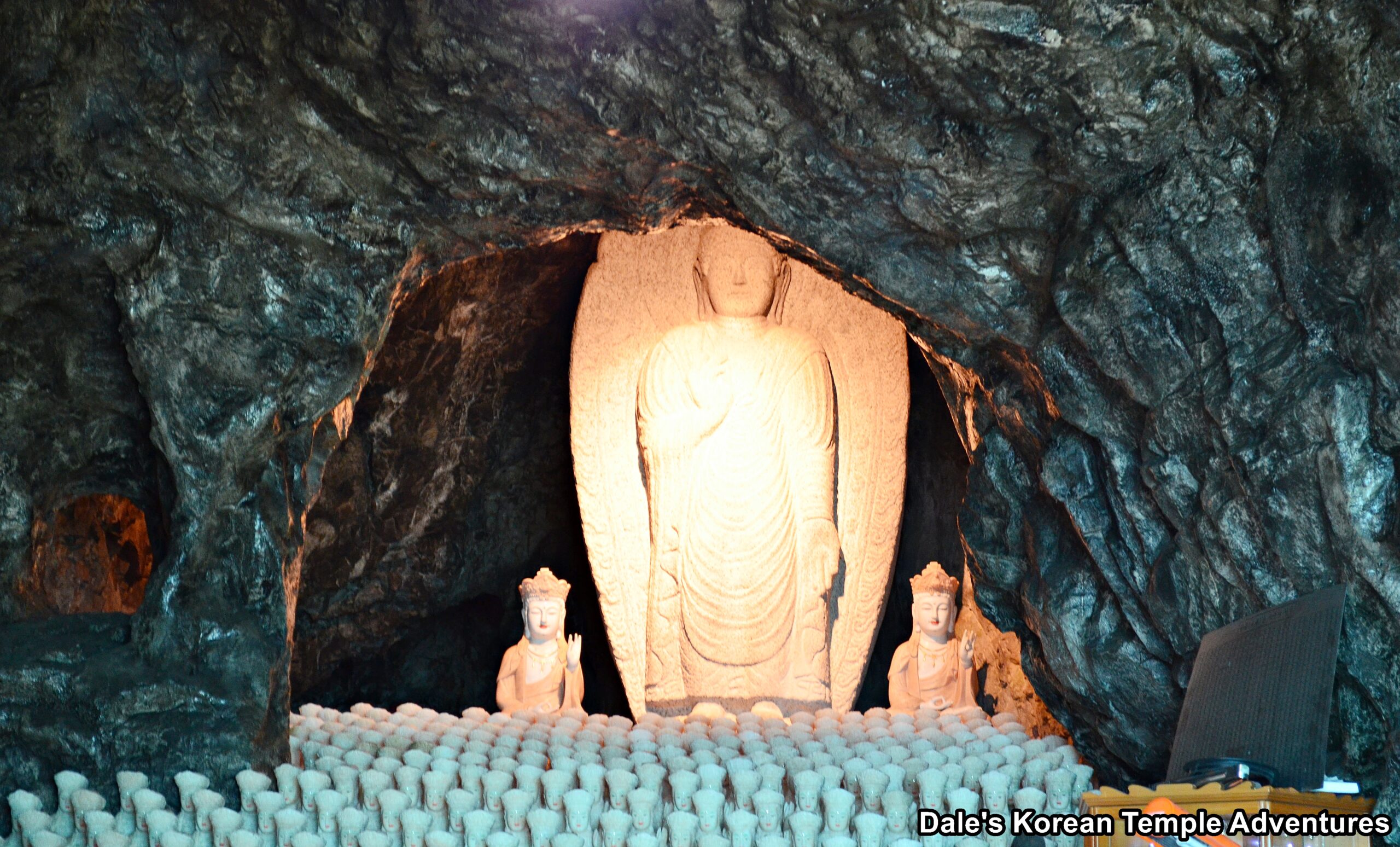
This posts contains affiliate links. I receive a percentage of sales, if you purchase the item after clicking on an advertising link at no expense to you. This will help keep the website running. Thanks, as always, for your support!
Hermitage History and Myths
Mitaam Hermitage is located on the eastern slopes of Mt. Cheonseongsan (922 m) in Yangsan, Gyeongsangnam-do. The hermitage is named after Amita-bul (The Buddha of the Western Paradise). Mitaam Hermitage was first established by the famed monk Wonhyo-daesa (617-686 A.D.). In addition to Mitaam Hermitage, Wonhyo-daesa built eighty-nine other temples and hermitages on Mt. Cheonseongsan (One Thousand Saints Mountain) which includes Hongryongsa Temple.
The hermitage was later expanded in 921 A.D. by the monk Jijong. It was expanded again in 1238 A.D. by the monk Jungjin. Mitaam Hermitage, and more specifically, the 8th century stone standing statue of Amita-bul (The Buddha of the Western Paradise) and its grotto are immortalized in the pages of the 13th century text Samguk Yusa (Memorabilia of the Three Kingdoms). It’s stated in the Samguk Yusa that five monks at Mitaam Hermitage were disciplining their minds in meditation, when they ascended to the Western Paradise.
More recently, Mitaam Hermitage underwent a renovation in 1888. It should also be noted that Mitaam Hermitage falls under the administrative control of the neighbouring Tongdosa Temple, which is the 15th Headquarters of the Jogye-jong Order.
Mitaam Hermitage is also referred to as the “Third Seokguram” for the naturally occurring grotto that’s located on the hermitage grounds. The Stone Standing Amitabha Buddha at Mitaam Hermitage that’s located inside the grotto is Korean Treasure #998.
Here’s a little more about Wonhyo-daesa and his connection to Mt. Cheonseongsan. The text below can be found throughout the Naewonsa Temple valley, and it’s been translated by Andrew Douch on his website. If you haven’t been to his website Korean Trails, I highly recommend it, especially if you enjoy hiking in Korea.
“In 673 Wonhyo began meditating in Seon Buddhism and eventually ended up going to mainland China. There was a time during his visit when 1000 people from the temple Taehwa-sa in Tang China were in danger of being buried under a mountain of mud after torrential rains. Upon realising this, Wonhyo threw out a wooden board, the people saw this strange board hanging in the air and thinking it mysterious, ran into the prayer hall, immediately upon which the mountain collapsed behind them. On the board thrown by Wonhyo had been the words, “Throwing the board, Wonhyo saves the people.”
“Because of this the 1000 sought out Wonhyo and became his disciples. Wonhyo began searching for a place for all these people to stay and upon reaching the spot where this Sanshin-gak now stands, disappeared. Wonhyo built 89 small temples in the area around Naewon-sa in which his 1000 disciples were to stay. Furthermore a large drum was placed in the area in front of Cheonseong-san which would announce the beginning of sermon to the disciples on the mountain, where he would lecture the Avatamaka Sutra. The place where he taught the sutra was called the field of Avatamaka (hwa-eom-beol) while the place where the drum was sounded was called Jipbukpong (grasp and strike drum).
“Furthermore because these disciples who climbed the mountain would get entangled in arrowroot vines and trip, Wonhyo called on the mountain spirits to clear the mountain of these vines. It is said to this day Cheonseong-san has no arrowroot vines. Later it is said that the 1000 disciples who studied under Wonhyo became sages, this is why the mountain has the name.“
As Andrew notes in his post, there are a few issues with the Naewonsa Temple valley text. First, Wonhyo-daesa never traveled to Tang China (618-907 A.D.); instead, he returned to Silla after attaining enlightenment while attempting to travel to further his Buddhist education in Tang China. Uisang-daesa (625-702 A.D.), his friend and travel companion, did in fact continue on to Tang China. As a result, it’s highly unlikely that Wonhyo-daesa would then have one thousand disciples from Tang China following him around the mountains of Yangsan. And another point that needs to be made is that Seon Buddhism wasn’t firmly established on the Korean peninsula until the late-8th and early 9th century with the founding of the Gusan Seonmun, or “Nine Mountain Meditation Gates” in English. However, it should be noted that Seon Buddhism did enter the Korean peninsula through Master Beomnang (632-642 A.D.). Beomnang was a student of Daoxin (580-651 A.D.), who is considered the Fourth Chan Patriarch. However, Beomnang’s efforts largely failed probably due to a lack of royal support. But while it took two additional centuries to take root in Korea, it would seem as though Seon Buddhism did in fact have some influence on Wonhyo-daesa (617-686 A.D.), according to scholar David Mason.
Either way, whether all or just part of the myth is true about Wonhyo-daesa and Mt. Cheonseongsan, it would appear that the famous monk did in fact play some part in the transmission of Buddhism from his home in Yangsan.
Again, if you haven’t already checked out Andrew Douch’s or David Mason’s sites, you really should!
Hermitage Layout
You’ll first make your way up to Mitaam Hermitage up a long, wandering, and very steep road, until you eventually come to a trailhead that leads you up to the hermitage grounds. The views from the trail, which is about five hundred metres in length, are gorgeous with the mountain peaks above and the neighbouring valley below. Finally, when you do arrive at the rocky ledge where Mitaam Hermitage is located, you’ll first be greeted by a gift shop to your immediate right and a coffee stand to your left. Passing by both of these commercial establishments, and the row of compact monks dorms and the visitors centre, you’ll see the stunning Daeungbo-jeon Hall.
The exterior walls to the Daeungbo-jeon Hall, rather uniquely, are adorned with simple paintings dedicated to the Nahan (The Historical Disciples of the Buddha). The latticework on the front door’s are beautifully adorned with wooden floral patterns. And at the base of these front doors are the descriptively designed Gwimyeon (Monster Masks).
Stepping inside the Daeungbo-jeon Hall, you’ll first notice the large red canopies hanging over the top of the well-populated main altar. In total, there are seven statues that take up residence along the main altar. The central three images are Seokgamoni-bul (The Historical Buddha) in the middle. This statue is then flanked on either side by Bohyeon-bosal (The Bodhisattva of Power) and Munsu-bosal (The Bodhisattva of Wisdom). To the left of this central triad are two Bodhisattvas. The first is Daesaeji-bosal (The Bodhisattva of Wisdom and Power for Amita-bul), who is joined to the left by a black haired image of Jijang-bosal (The Bodhisattva of the Afterlife). To the right of the central triad is an ornate statue of Gwanseeum-bosal (The Bodhisattva of Compassion). This statue is then joined to the right by an older, simpler statue of Seokgamoni-bul. All of these statues are joined by flying Bicheon (Flying Heavenly Deities) and dragons up near the beautiful red canopies.
The most intriguing aspect of the artwork housed inside the Daeungbo-jeon Hall is the large mural that hangs in the far right corner near the second Seokgamoni-bul (The Historical Buddha) statue. In this mural, you can see Wonhyo-daesa standing in the middle of a elevated rocky perch. He’s surrounded by what looks to be one thousand of his followers for which Mt. Cheonseongsan gets its name. Joining the one thousand followers are Buddhist monks, aristocracy, and potentially Queen Seondeok of Silla (r. 632-647) making an offering to Wonhyo-daesa in the bottom left corner, and potentially Dokseong (The Lonely Saint) to the right of Wonhyo-daesa. Dokseong appears to be holding a stick with a sutra attached by a rope. He has long, white eyebrows and a leafy garment covering his body. (Thanks to David Mason for his input, as always).
Further up the trail to the right, and past the hermitage’s kitchen, you’ll come to the hermitage’s compact Jong-ru (Bell Pavilion). Along this path, you’ll be headed towards an indoor pavilion that houses both the entrance to the Samseong-gak Hall, as well as the entrance to the Gulbeop-dang Hall, which houses the Stone Standing Amitabha Buddha at Mitaam Hermitage (T #998). Housed inside the Samseong-gak Hall to the right are three newer murals dedicated to three of the most popular shaman deities that you’ll find at a Korean Buddhist temple: Chilseong (The Seven Stars), Dokseong (The Lonely Saint), and Sanshin (The Mountain Spirit).
To the left, in a three metre wide opening to the cave, stands the 8th century statue dedicated to Amita-bul (The Buddha of the Western Paradise). There are new granite arches that have been installed at the naturally occurring cave entry. And the historic statue rests on top of a granite stand that has cloud designs etched onto it. The image of Amita-bul appears with a large ushnisha on top of its head. It also has long ears that fall to the top of Amita-bul’s shoulders. The left hand is attached to its body, while the right hand is placed near the centre of the statue’s chest, and it has a straight upright posture. The statue at Mitaam Hermitage follows a similar style of the more famous Stone Standing Amitabha Buddha of Gamsansa Temple, which is National Treasure #82. The Gamsansa Temple dates back to 719 A.D.
How To Get There
There are two ways that you can get to Mitaam Hermitage. The first is that you can catch Bus #2000 from the Yangsan Intercity Bus Terminal. The bus ride will take about forty minutes, and you’ll have to get off at the Jujin Village in Soju-dong. The second way you can get to Mitaam Hermitage is from the Busan City Bus Terminal in Nopo-dong. You can catch either Bus #247 or Bus #301 and get off at Jangheung. From this stop, you’ll need to follow the hermitage signs the rest of the way to lead you up to Mitaam Hermitage. Either way, make sure you pack your hiking boots because where the bus drops you off, you still have the rest of Mt. Cheonseongsan to hike to get to Mitaam Hermitage.
Overall Rating: 8/10
While definitely out of the way and quite the climb, Mitaam Hermitage more than makes up for it with its 8th century statue of Amita-bul (The Buddha of the Western Paradise). Adding to this is the masterpiece painting dedicated to Wonhyo-daesa inside the Daeungbo-jeon Hall, as well as the amazing views and the floral latticework adorning the main hall.
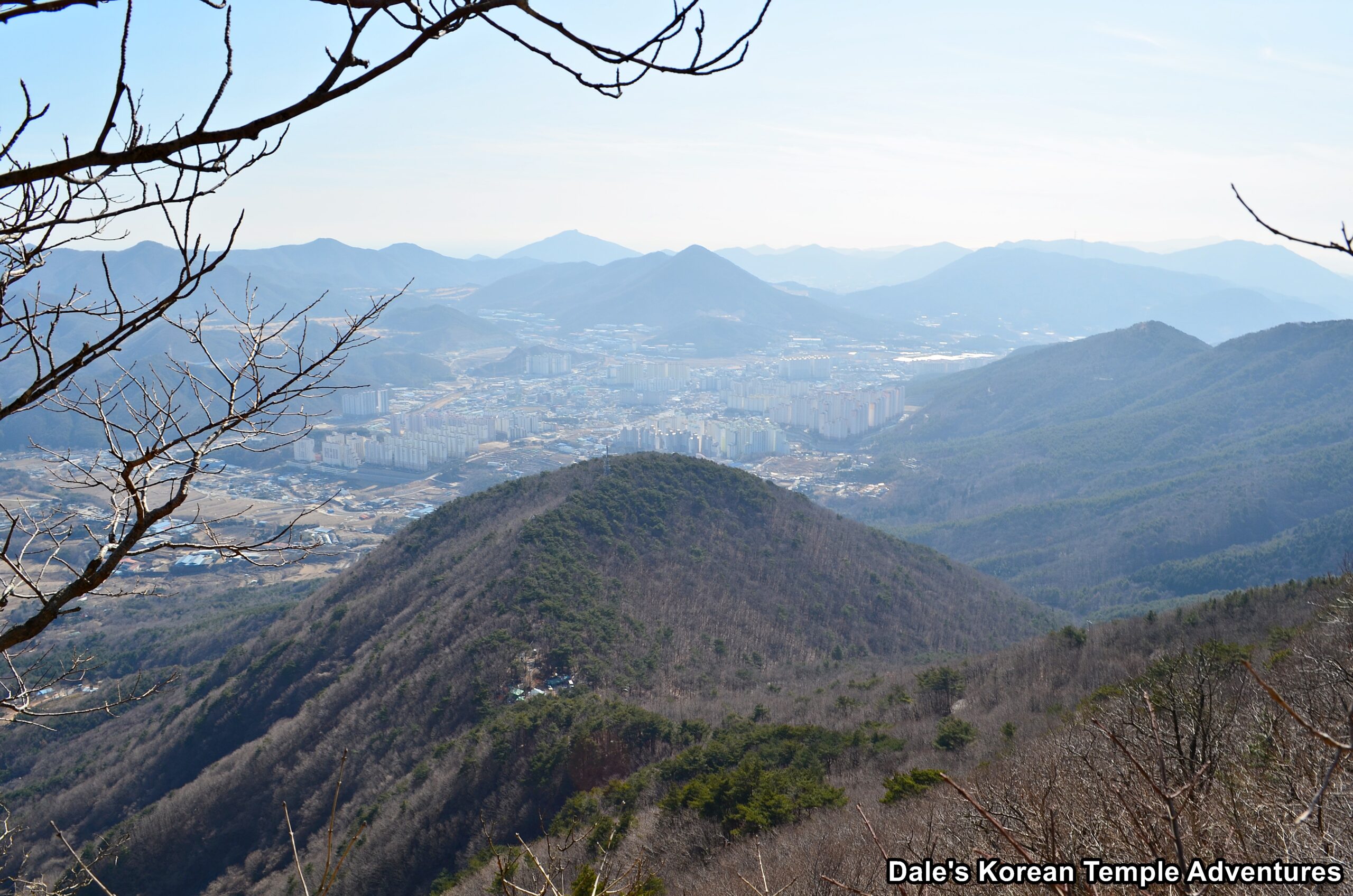
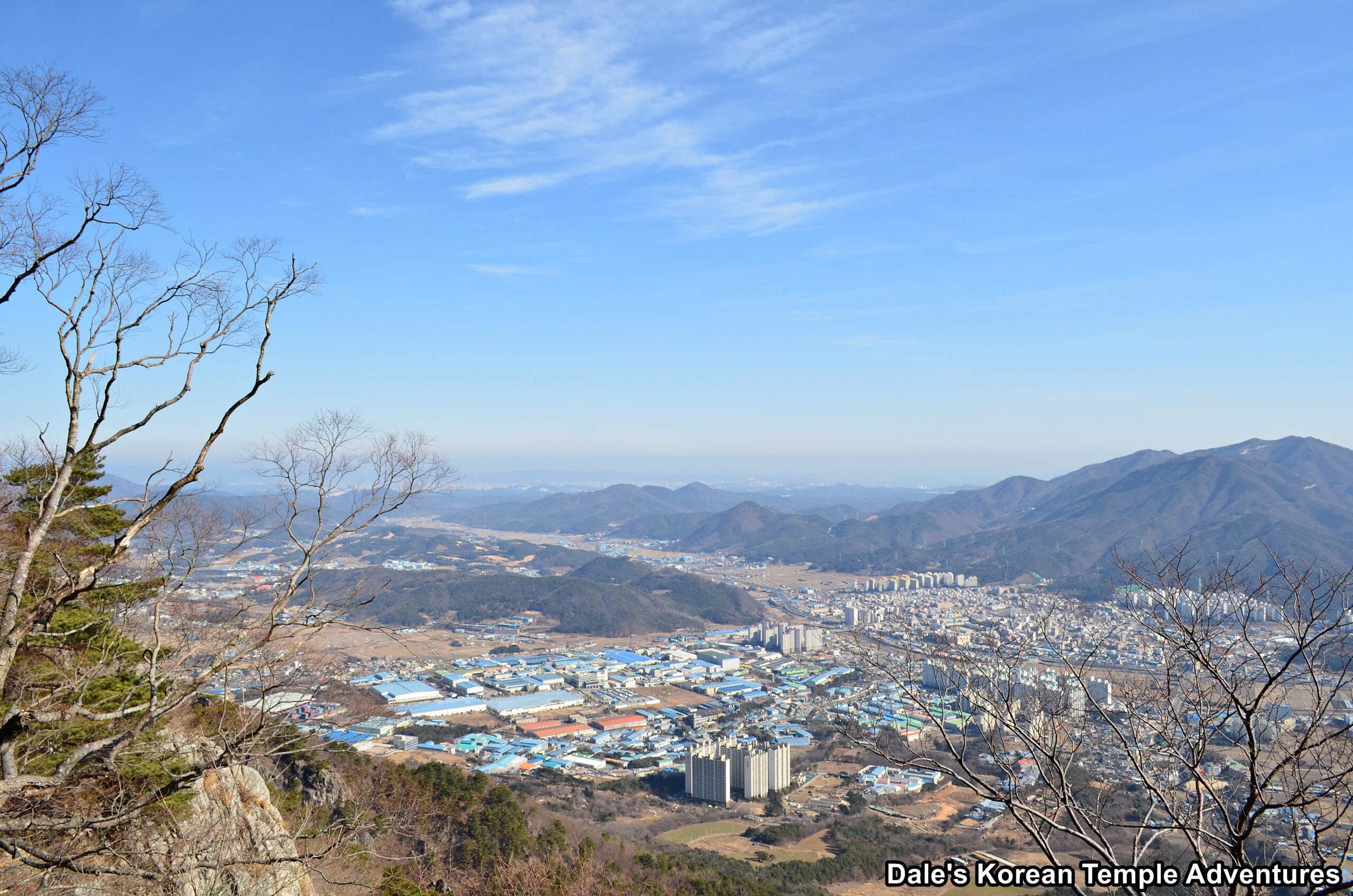
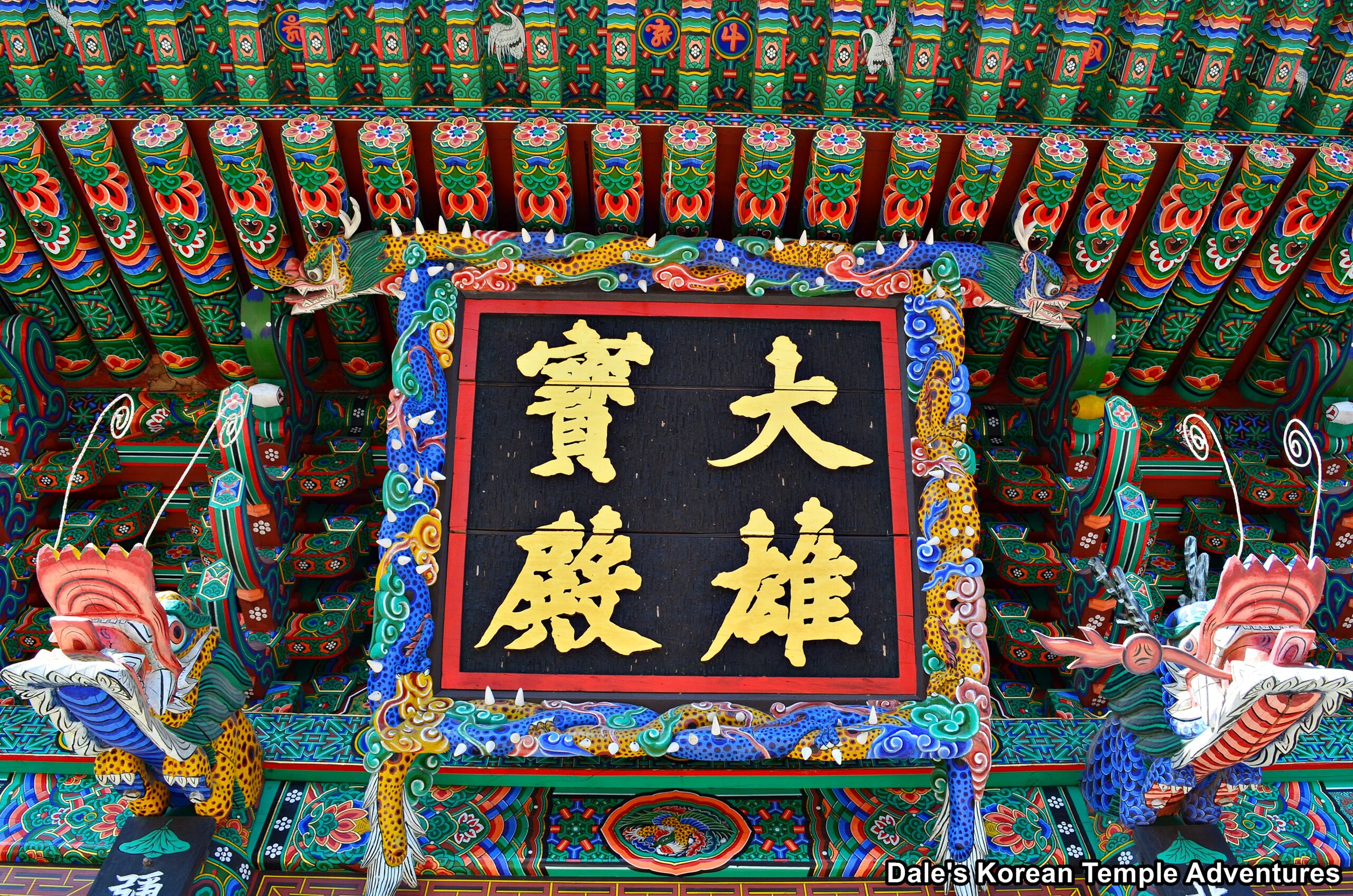
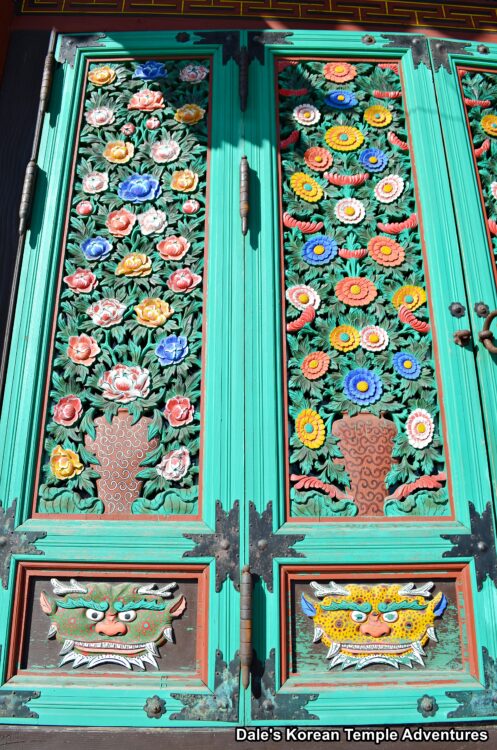
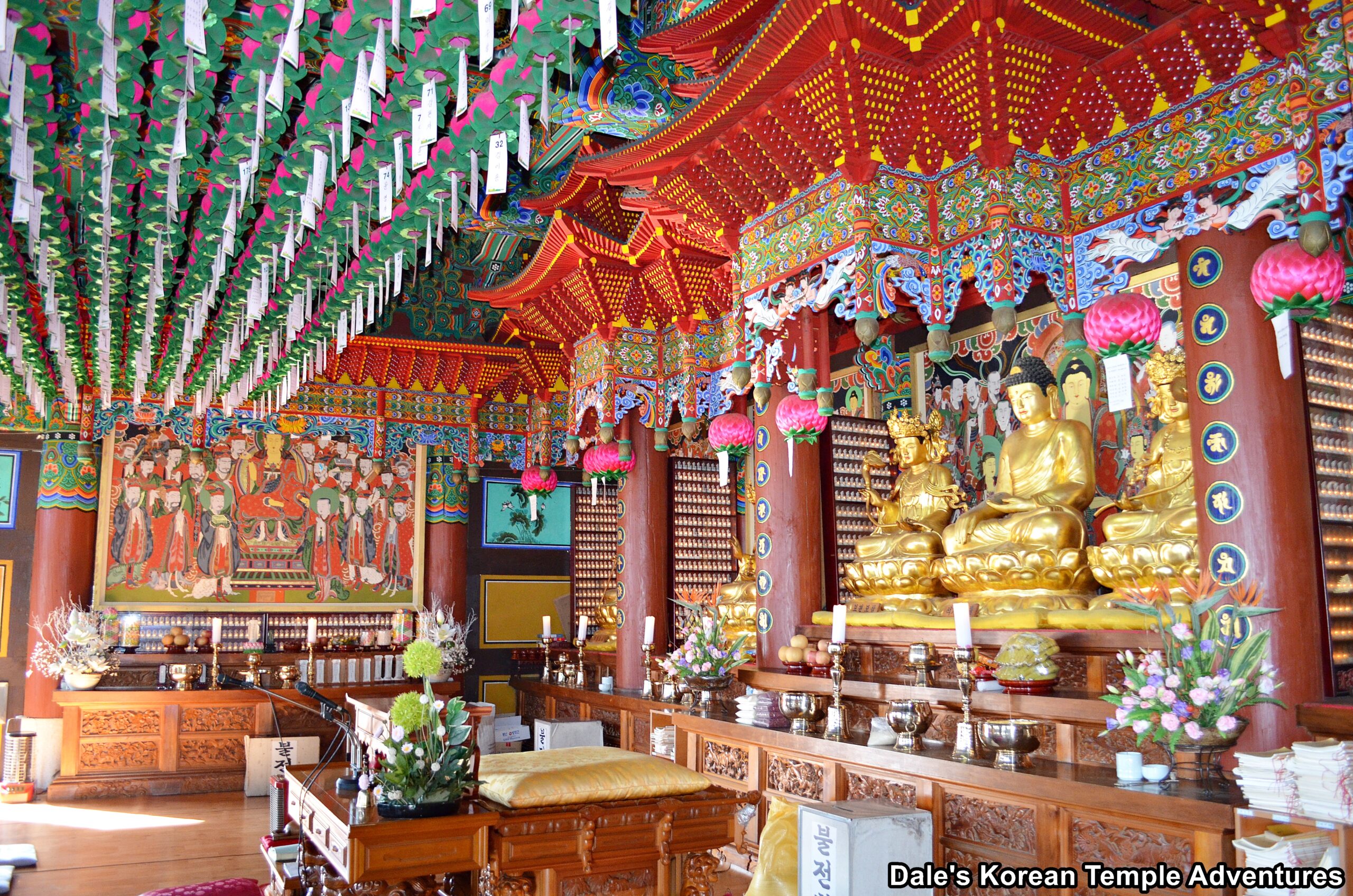
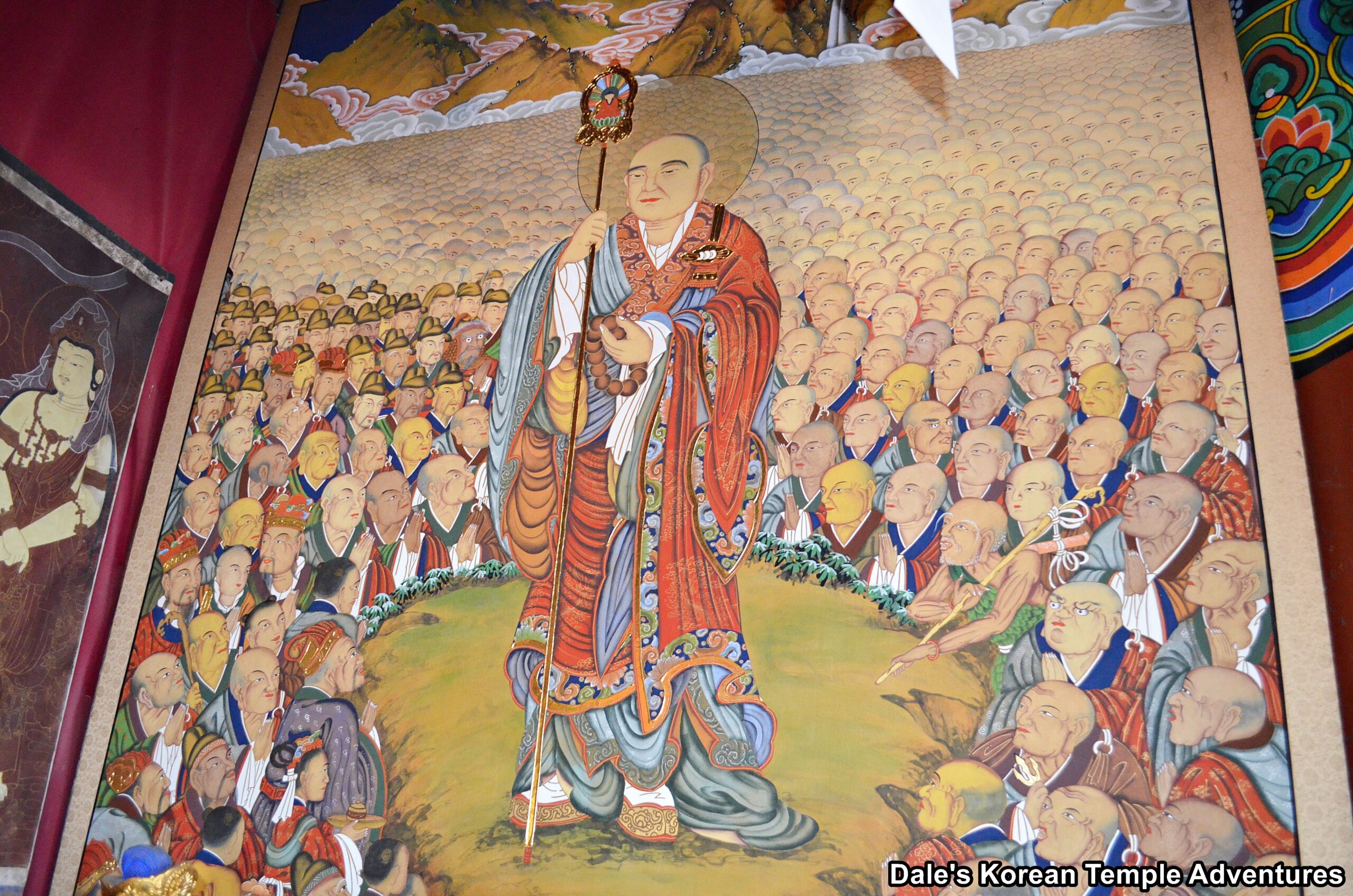
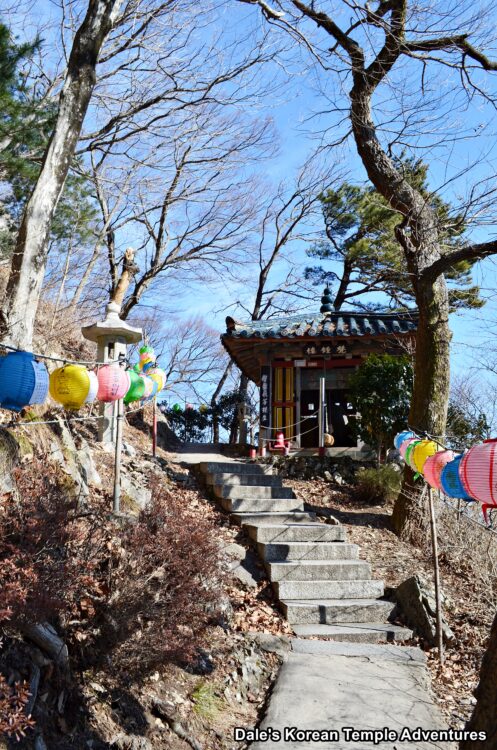
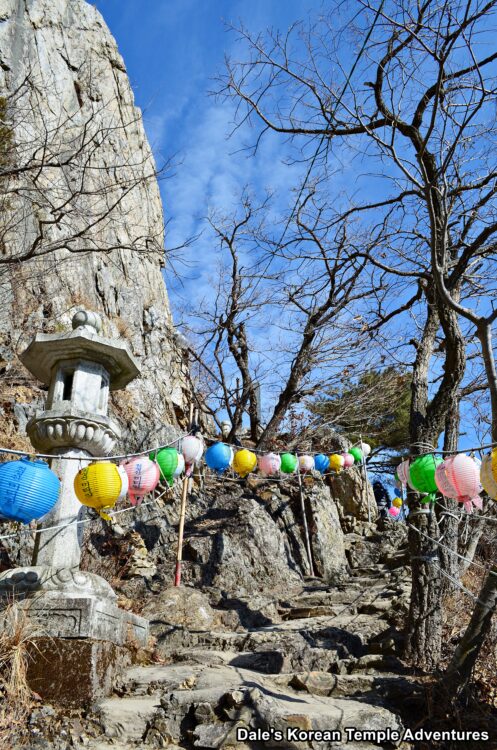
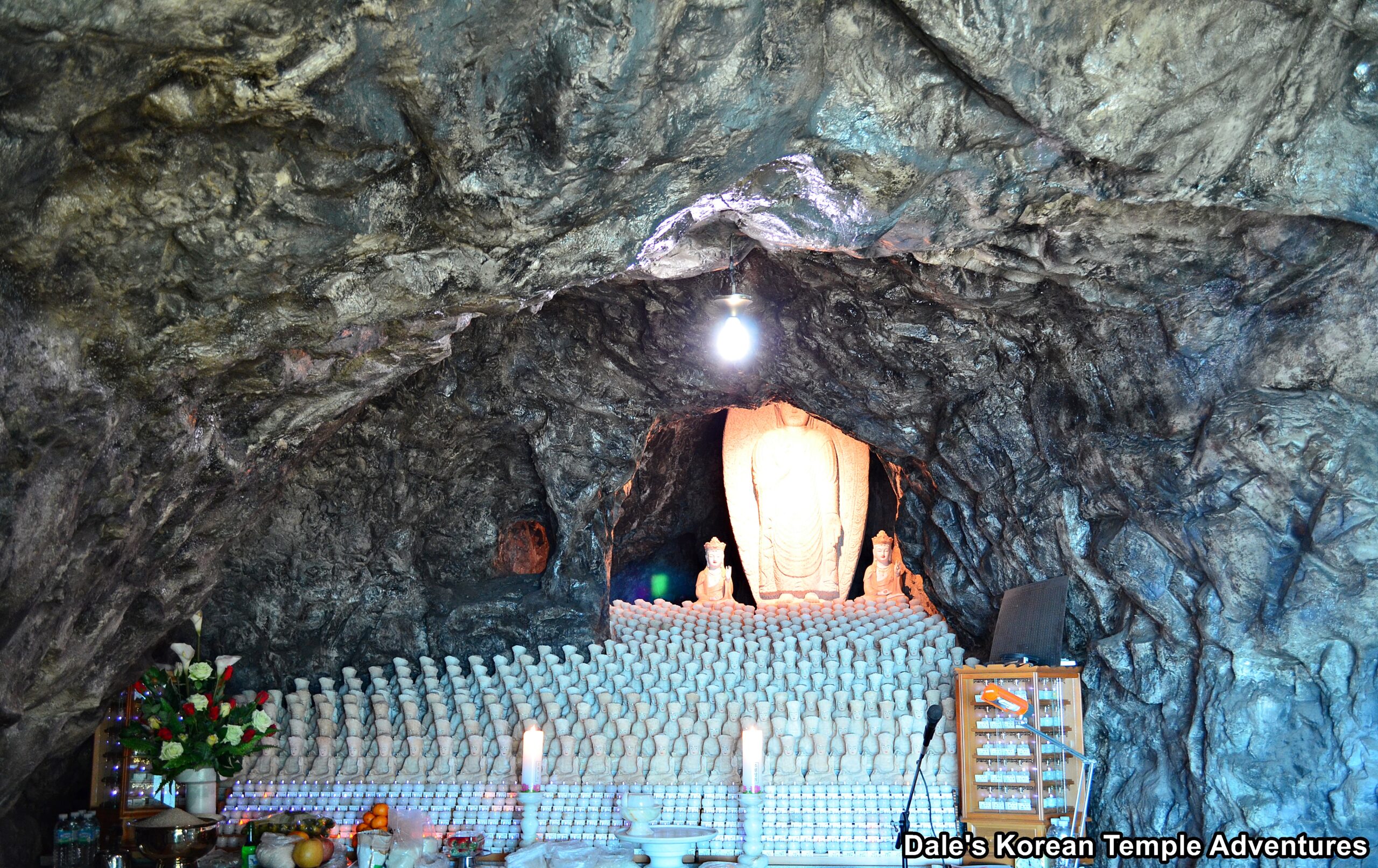


Recent comments